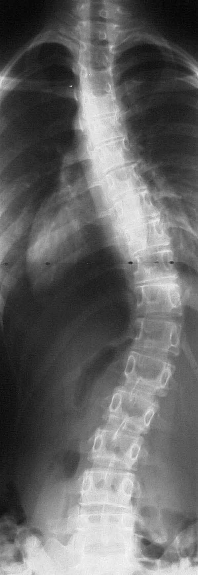Scoliosis Helped in Clinical Case StudiesPublished in the January 12, 2006 issue of the scientific journal, Chiropractic & Osteopathy from Australasia, comes a report of a series of case studies documenting chiropractic helping multiple cases of idiopathic scoliosis. In this report three documented case studies are followed and the results reported after chiropractic care. Idiopathic scoliosis is the most prevalent form of scoliosis and occurs to some degree in approximately one half million adolescents in the US. Scoliosis is a bending or curvature of the spine. The term idiopathic means that the origin is unknown.  In this report the three subjects each had uniquely different situations. The first subject was a 37-yr-old female who came to a private spine clinic with a chief complaint of neck and back pain. Her history included surgical spinal fusion and implantation of a Harrington rod against her spine. The second subject was a 30-yr-old male who also went to a private spine clinic with a chief complaint of chronic mid thoracic pain. His history included scoliosis and a previous diagnosis of Scheuermann's Disease. The third subject was a 23-year-old female who presented with neck and mid-back and shoulder pain. The subjects in this study were noted as having curvatures measuring 35°, 22°, and 37° respectively. These curvatures were measured using the "Cobb angle" which is a standard technique used to measure the severity of a spinal curve - in degrees - from spinal x-rays. The chiropractic care consisted of a 12 week period of adjustment and home care treatments. These were followed up by post-treatment x-rays and examinations in order to evaluate the progress. The results were measured using the Cobb angle method and the measurements were compared to the Cobb angles recorded at the beginning of care. The results in these cases all showed improvement. The patient with an initial 35° Cobb angle showed a 13° reduction after the 12 week period. The patient with the initial 22° Cobb angle showed an 8° improvement, and the patient with the 37° initial Cobb angle, showed a decrease of 16° over the 12 weeks. The researchers noted that this study was small, and they said that the findings suggest the need for a larger controlled study. They concluded, " Given the perceived results of the cases outlined here, it is worthy of future investigations in such cases." |